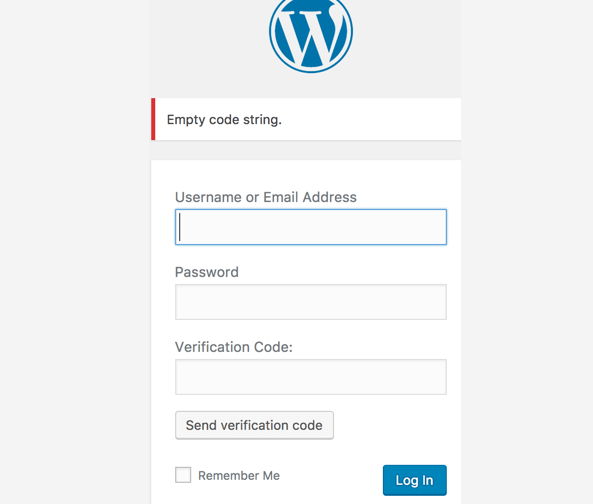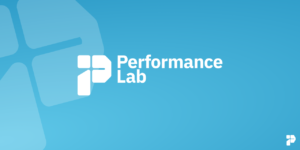In this article, We review the latest WordPress security facts that are necessary to know, as well as tips on how to keep your online website secure and safe. As one of the most popular content management systems, WordPress gets a lot of attention. Unfortunately, this attention is not always positive.
The truth is WordPress users are often the most vulnerable to cyber attacks, and security statistics can sometimes be scary. But, staying informed and on top of your site security is the number one way to keep you, your website, and your users safe.
So, in today’s blog, we’re talking about all things security.
We’ll be giving you all the facts you need to know about WordPress security in 2021 as well as giving you hints, tips, and helpful suggestions on how to keep secure.
WordPress Security Statistics 2021
First things first, let’s take a look at some of the latest online security facts.
According to stats compiled by Web Tribunal:
- There is an online hacker attack every 39 seconds.
- 300,000 new malware are made every single day.
- The cost of data breaches in 2021 is set to reach $150 million.
These general security figures highlight how important it is to protect your online store. But this becomes even more apparent when we focus on WordPress.
Let’s take a look at the facts and figures compiled by WP Clipboard.
- Due to its popularity and widespread use, WordPress is a common target for hackers. There are close to 90,000 attacks per minute.
- 8% of WordPress sites are hacked due to weak passwords.
- WordPress websites are particularly vulnerable when they’re not updated regularly enough. 61% of attacked websites are outdated.
- 52% of WordPress vulnerabilities are caused by out-of-date plugins. 37% are caused by WP core files and another 11% by themes.
- Over 4,000 WordPress websites are infected by fake SEO plugins.
So, if you love WordPress as we do – how can you mitigate these risks?
Combating WordPress Security Risks
It’s easy to fall into the mindset of thinking your site could never be hacked. But there’s no other way: WordPress security has to be taken seriously.
As a WordPress user, it is important to realize your website might be vulnerable to security breaches and address these issues before you’re attacked. As they say, prevention is better than cure.
How to Tackle WordPress Vulnerabilities
Securing your WordPress site is all about risk reduction. If you invest in security measures that make it harder for hackers to access your site, the chance of your site being hacked will be reduced.
Below are some tips on increasing WordPress security. This information will help those who just started their site and need to implement security measures as well as those whose site security needs tuning.
1. Choose the Right Hosting Company

A simple way to increase the security of your site is to check your hosting provider.
Choose a WordPress hosting company that supports the latest versions of PHP and MySQL and is optimized to run WordPress.
The company should provide support in the case of a security issue. They should also provide account isolation so problems with one account on the server cannot cause problems for your site.
It’s also useful to choose a hosting company that scans for malware and has daily internal backups.
The bottom line is if you want a secure site, it’s important to go with a host that cares about security.
2. Update WordPress Core and Plugins

Another way to reduce the vulnerabilities on your site is to make sure you are using the most up-to-date version of WordPress. Every new version of WordPress addresses security issues present in the previous version.
According to WordPress security experts Sucuri, 61% of WordPress sites are out of date at the point of infection.
This is also true for plugins. Choose plugins that are updated regularly by their maker. Make sure you do your part to keep them up to date when updates become available. Opt for plugins that are made by professional developers and never use plugins that are out of date or no longer supported.
3. Enhance Login Security
An important aspect of maintaining site security is creating secure logins. There are several simple ways to do this.
First, make sure your passwords are strong. A weak password is an easy target for hackers. Also, change your passwords frequently. Though it’s often the default option, don’t use “admin” as a username. Hackers know this is the default so having this username makes their job a lot easier.
In addition, consider using two-step authentication. This involves providing both a password and an authorization code to log in. For example, the Google Authenticator plugin:
Two-Factor Authentication WordPress Plugin
Offers a robust solution for WordPress two-factor authentication and provides better account security for your WordPress users. WP-admin can choose a preferred method out of four 2FA methods available
Two-factor authentication is a WordPress plugin that offers 2FA via Google Authenticator, Mobile Phone SMS, and unique email code and links.
It’s a sure way to secure your site from malicious and brute-force login attempts.
The WordPress administrator can either activate the rule for all users or define which user roles require the two-factor measures.
4. Backup Your Site Often
It is also important to do regular backups of your site. That way, if your site is hacked, you’ll be able to restore it quickly. If your site isn’t backed up, you run the risk of losing your entire site in the event of an attack.
You can use backup options through your host server, or you can use an external backup service like a plugin. It’s good to have more than one mode of backup, including an external one. That way, if the host’s data center fails, you can still retrieve your data through another source.
Some good external backup plugins include BackupBuddy and Updraft.
5. Check your Directory Access and .htaccess Files
WordPress directory permissions can prevent unauthorized users from viewing and changing files required to run WordPress.
To enhance security, make it so visitors to your site cannot view WordPress directories that are not part of your site content. Make rules for who can and cannot access parts of your site.
You can modify access using .htaccess files. Use these to your advantage so that when a potential hacker tries to view certain parts of your site, such as the directory, they are redirected or shown a “403 forbidden” page.
You can even restrict access to your WordPress admin page to a certain IP address by creating a .htaccess file and uploading it to the directory. Read this article about hardening WordPress for more information about using .htaccess
6. All-In-One Security Plugin
If you’re looking for comprehensive security in one installation, you might want to get an all-in-one security plugin. This plugin offers many features that address common security issues.
There are several good options out there for similar plugins. One good one is iThemes Security. This is the most downloaded security plugin on WordPress.org. It finds vulnerabilities in your site and gives a comprehensive view of what should be done to protect it.

BruteProtect is a security feature that is part of the popular Jetpack plugin. BruteProtect stops brute attacks against WordPress sites. Another is All in One Security, which is an all-in-one security and firewall plugin.

Installing an all-in-one security plugin is a great option if you’re looking for a thorough approach.
The CreativeMinds Security bundle includes five plugins designed to overhaul your WordPress site security. And at a discount!
It packs the Secure Login and 2FA plugin mentioned above, along with:
- Email Domain Blacklist Plugin – Protects your WordPress site by blocking email addresses using blacklisted domains from registration.
- CM WordPress HTTPS Pro – Automatically redirection from HTTP to the HTTPS version of an URL or the whole site.
- Admin Tools – Improve your WordPress admin dashboard with error logs and cron jobs tracking.
- Content Restriction – Locks the whole site or part of it to specific users – for instance, only logged-in accounts.
7. Scan Your Site Often
There are several options that will scan your site for threats. Scanning is important for detecting activity that could harm your site. These options alert you to any suspicious activity, so you know right away if your site is being targeted.
WordFence is one of the most trusted security plugins. It scans sites frequently, detecting malicious activity and acting as a firewall to keep attacks from happening.
Sucuri is a company that offers a firewall and antivirus for complete security. They offer a WordPress security plugin that scans sites and offers information on how to strengthen security. They also offer a free website scanner that allows you to see if your site has been compromised.
8. Penetration Testing
Penetration testing is the most expensive and intensive method of ensuring your site is secure. It involves hiring a company to attempt to hack into your site using bots, scanners, and manual techniques.
This method will challenge your site’s security and show you any holes that resulted in a hacked site during the testing period.
9. Monitoring Your WordPress Site
If your site is attacked, it’s important that you know as soon as possible. There are several services that monitor your website and notify you if something is wrong.
One of the most comprehensive monitoring services out there is Website Security Platform. It monitors your site, checking for malware and providing in-depth reports.
The Sucuri Security plugin also offers monitoring services. It allows site administrators to see activity concerning the security of their site straight from the dashboard. It also monitors file integrity.
With Sucuri, you can edit your notification settings, choosing which notifications you want to receive via email. This way, you can stay up to date with the security of your site.
WordFence is another resource that monitors site traffic, logins, and comments to make sure there is no suspicious activity.
Search Console Plugin
CreativeMinds’ Search Console plugin helps you monitor suspicious input attempts on your search fields. This is a bonus: the plugin actually improves the overall search experience but has solid security enhancement potential.
To help you prevent spambots, hackers, and malicious users from attempting to overload the server, it boasts a complete log of all performed searches. It accompanies details, such as IP address and the number of attempts.
You can easily ban IPs that perform suspicious searches and save precious time.
The search log shows data on performed searches
WordPress Security is Vital
As you’ve seen in this post, there are many ways you can protect your WordPress site. There is a lot of good information out there to help you. Making your website harder to hack should be your main aim. If you haven’t already, try some of these options.
Good WordPress security requires some forethought to protect from potentially devastating attacks. As Benjamin Franklin said, “An ounce of prevention is worth a pound of cure.”
Consider this post as you work to strengthen your WordPress site’s security.





